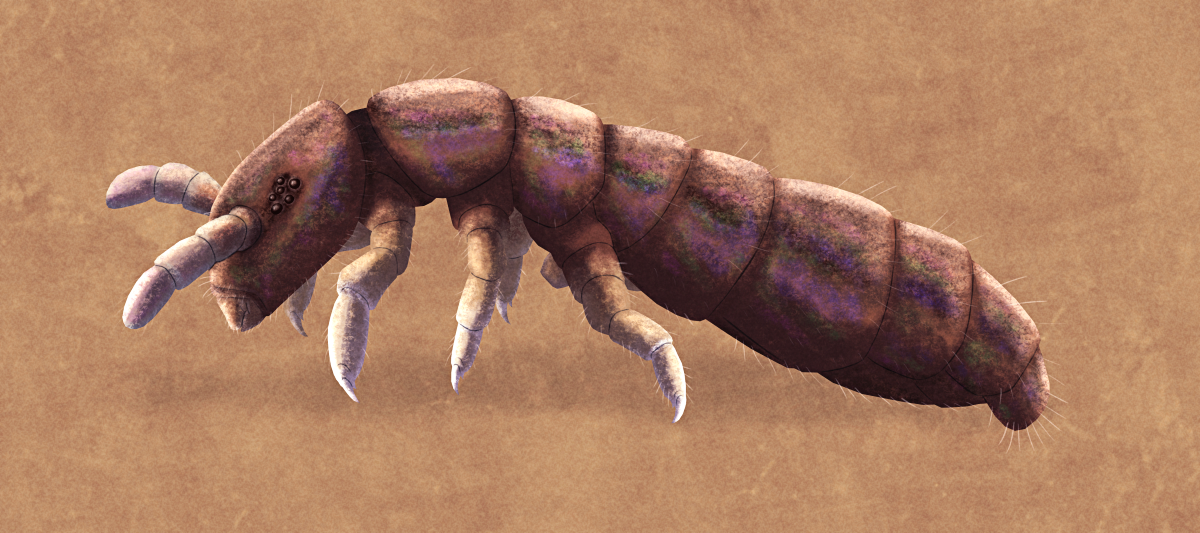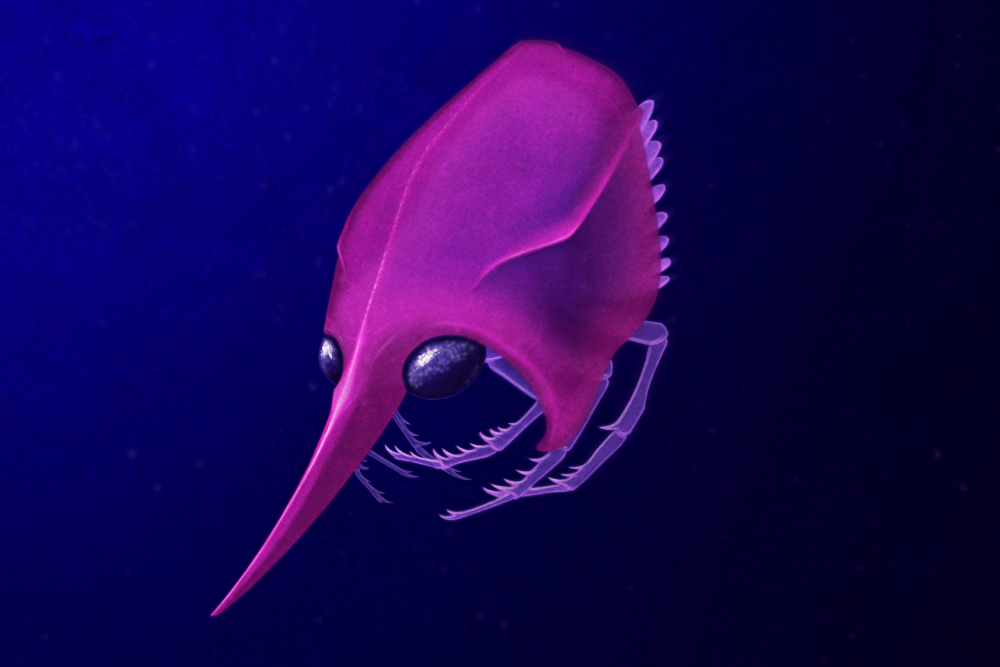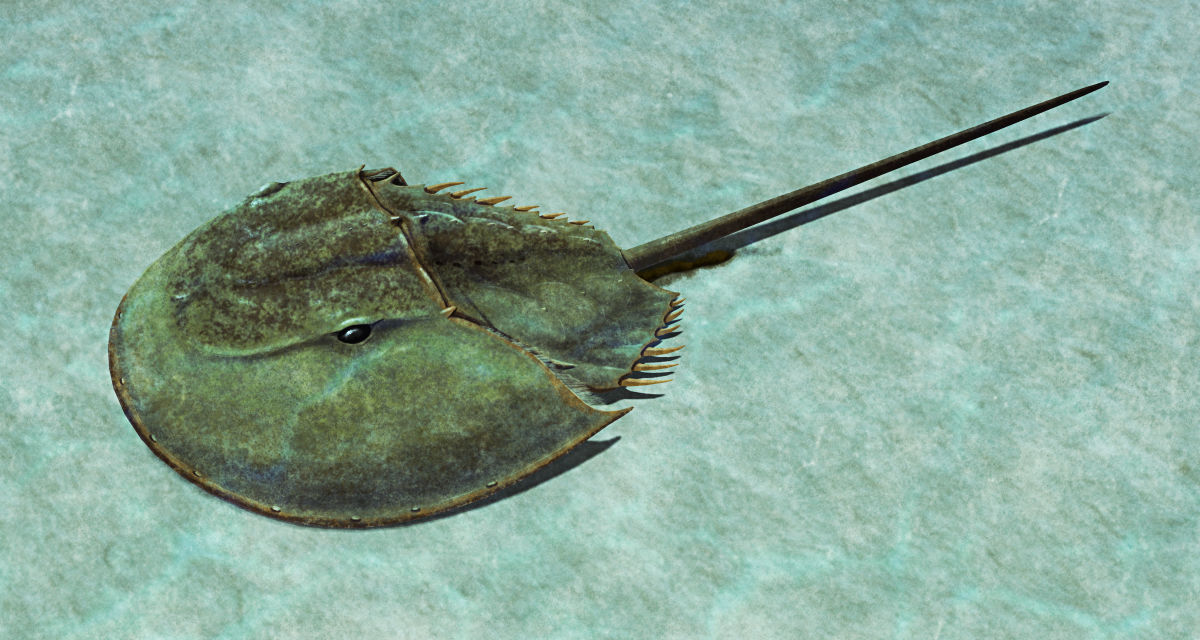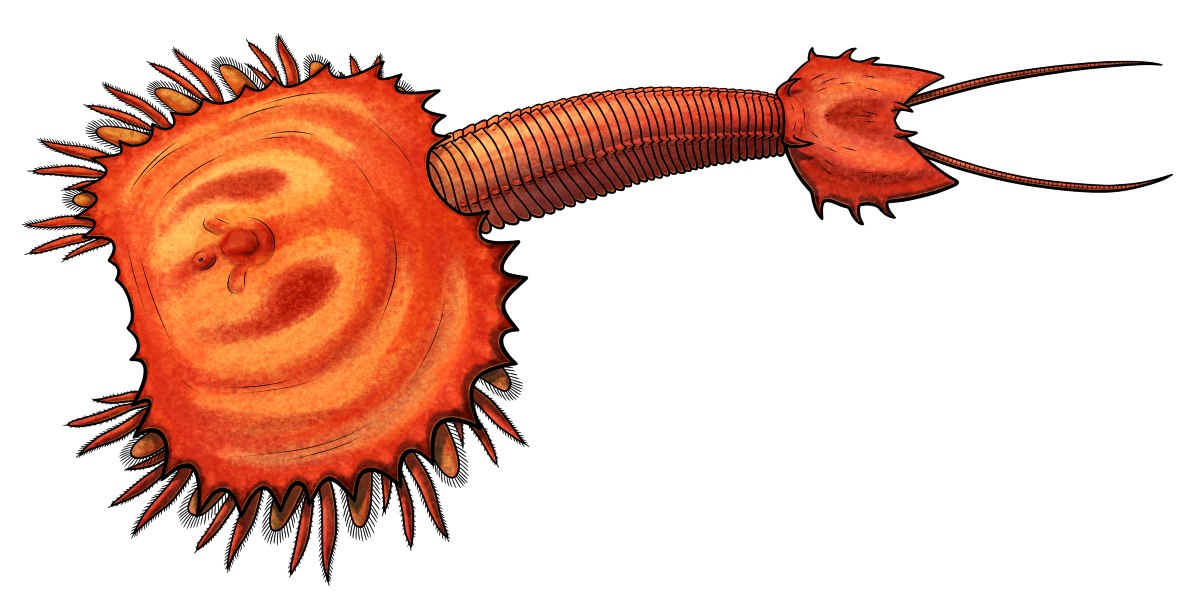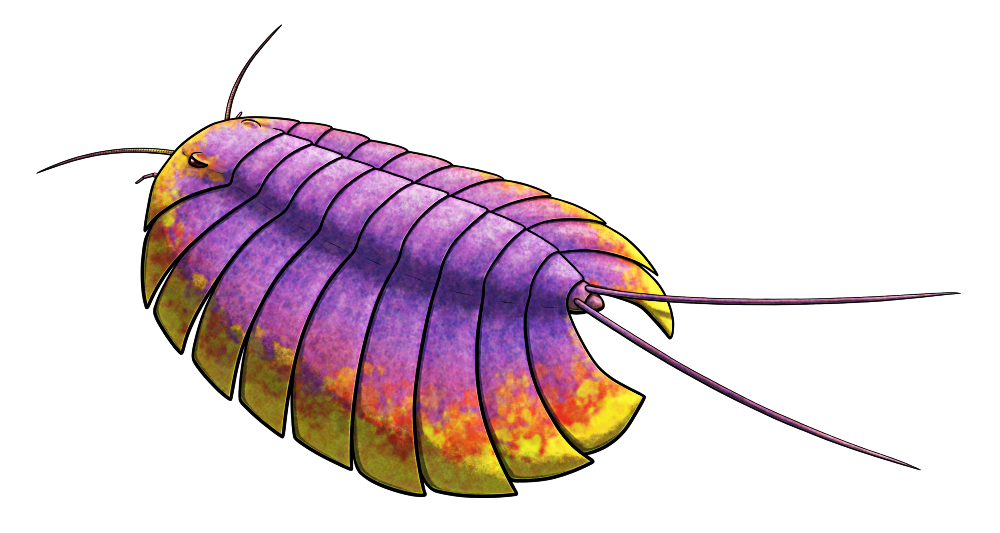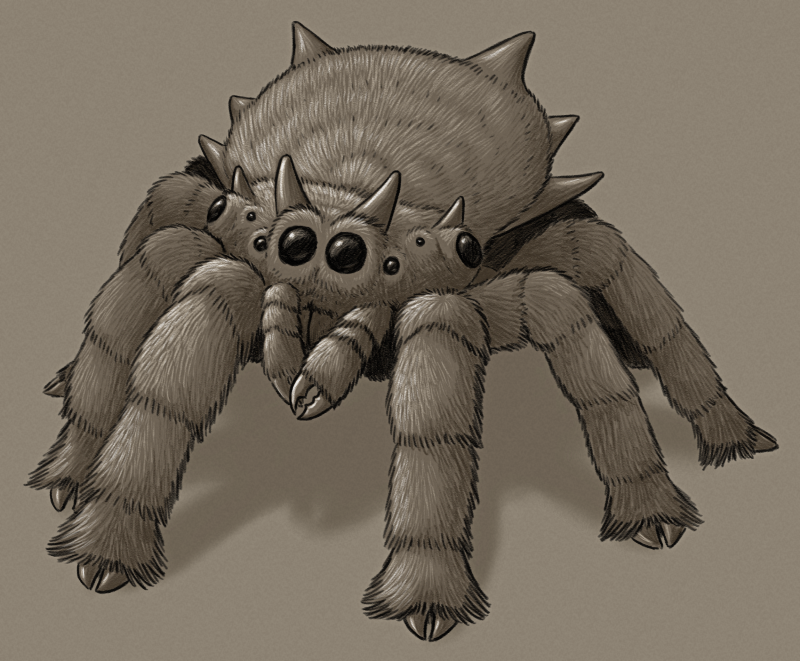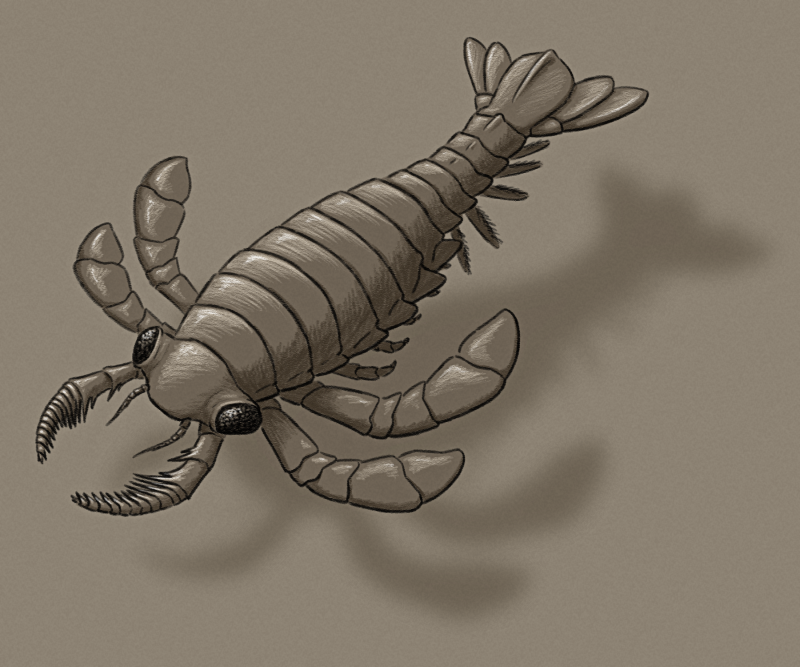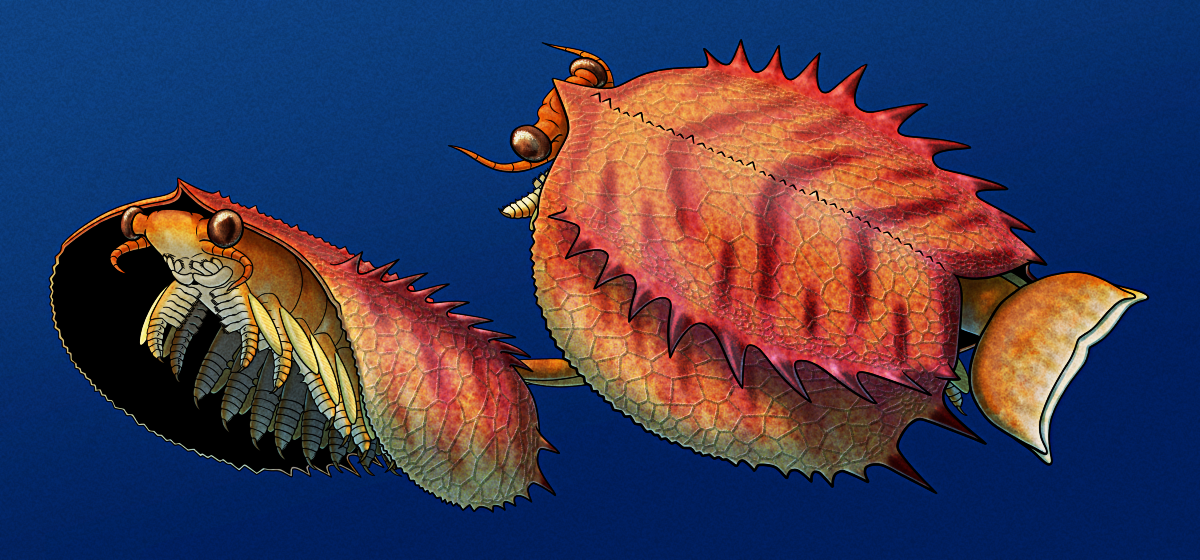The tuzoiids were an enigmatic group of Cambrian invertebrates known mostly just from their spiny bivalved carapaces. Although hundreds of fossils of these arthropods were discovered over the last century or so, only vague fragments of the rest of their bodies have been found even in sites usually known for preserving soft tissue impressions.
…Until late 2022, when several new specimens from the Canadian Burgess Shale deposits (~508 million years ago) were described showing tuzoiid anatomy in exceptional detail, finally giving us an idea of what they looked like and where they fit into the early arthropod evolutionary tree.
Tuzoiids like Tuzoia burgessensis here would have grown up to about 23cm long (~9″). They had large eyes on short stalks, a pair of simple antennae, a horizontal fluke-like tail fan, and twelve pairs of appendages along their body – with the front two pairs at the head end being significantly spinier, and most (or all) of these limbs also bearing paddle-like exopods.
The large carapace enclosed most of the body, and was ornamented with protective spines and a net-like surface pattern that probably increased the strength of the relatively thin chitinous structure.
Together all these anatomical features now indicate that tuzoiids were early mandibulates (part of the lineage including modern myriapods, crustaceans, and insects), and were probably very closely related to the hymenocarines.
Tuzoiids seem to have been active swimmers that probably cruised around just above the seafloor, with their stout legs suggesting they could also walk around if they flexed their valves open. The arrangement of their spiny front limbs wasn’t suited to grabbing at fast-swimming prey, but instead may have been used to capture slower seafloor animals or to scavenge from carcasses.

